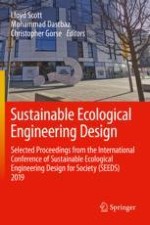2020 | OriginalPaper | Buchkapitel
Urbanisation and the Built Environment: Exploring How the Built Environment Can Enhance the Health and Wellbeing of the People Living in Urban Slums
verfasst von : Lilian Nwanyisonde Smart, Dilanthi Amaratunga, Richard Haigh
Erschienen in: Sustainable Ecological Engineering Design
Aktivieren Sie unsere intelligente Suche, um passende Fachinhalte oder Patente zu finden.
Wählen Sie Textabschnitte aus um mit Künstlicher Intelligenz passenden Patente zu finden. powered by
Markieren Sie Textabschnitte, um KI-gestützt weitere passende Inhalte zu finden. powered by
